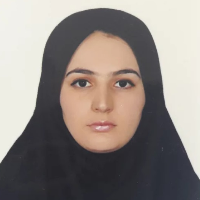Identification of effective factors concentration of heavy metals in the dust existing in the air of Tehran metropolis
In large and industrial cities, thousands of heavy metal particles are released into the environment [2]. These heavy metal particles are released by attaching to dust particles on a large scale [3]. It is important to study heavy metal concentrations in the dust falling due to the threats for human health [1, 4, 5]. Dust originates from both natural and human sources. Studies have been conducted to investigate the sources of heavy metal emissions in street dust with cluster analysis [CA] and principal component analysis [PCA] methods. The metropolis of Tehran has a population of over eight million people, that facing a severe air pollution problem. Therefore, the purpose of the present study was to identify the factors of increasing the heavy metal concentrations (Al, As, Cd, Co, Cr, Cu, Fe, Mg, Mn, Ni, Pb, Se, Si, V, Zn) in the dust falling of Tehran city.
Dust fallout samples were collected with using Marble Dust Collector (MDCO) from 28 different locations across the city of Tehran, during winter of 2017. XRF analysis used to identify and determine the concentration of heavy metals. The Principal Component Analysis (PCA) method were summarized 15 heavy elements studied into three factors. The kriging interpolation method was used to determine the role of each factor in the study area. In the next step, the extracted factors were grouped based on factor scores, by statistical method of cluster analysis.
The results of the Principal Component Analysis (PCA) showed the existence of three factors: natural, human and combination of natural and human factors which increasing the concentration of heavy metals in the dust of Tehran metropolis.
Factor 1: Aluminum, chromium, iron, magnesium, manganese, nickel, silicon, and vanadium have the same emission source. These factors are not affected by human activities but have natural origin. Therefore, this category was called the natural factor.
Factor 2: Arsenic, cadmium, copper, lead, and selenium have the same emission source. Probably, human factors have role in increasing these elements in the dust falling. Therefore, this category was called the human factor.
Factor 3: Cobalt and zinc have the same emission source. This factor is combination of both natural and human factors.
Based on the extracted factors and with using method of Cluster Analysis (CA), the stations in Tehran were classified into four clusters as follows:The First group: Forest and Range Organization of IRAN, Dadman Blvd, Pole Gisha, Arash Blvd, Majidiyeh Shomali, Janatabad, Shahre Ziba, Pole Kan, Motahhari, Narmak, Hashemi, Tehransar. These stations are located in the northern and western regions of Tehran.
The second group: Afsaria station is located in the southeast of Tehran. This station has the highest concentration of heavy metal in dust falling.
The Third group: Velenjak station is located in north of Tehran. The heavy metal concentrations in dust falling are higher than other groups in human resources.
The Fourth group: Enghelab, Darvaze Dolat, Imam Hossein Square, Nawab, Si-e-tir, Komeil Gharbi, Tehranno, Piroozi, Nazi Abad and Shahr-e-rey are located in this cluster. These stations are located in the central, eastern and southern regions of Tehran. The concentration of heavy metals in these regions are high.
Heavy metals in dust are an important component of urban pollution. The harmful effects of heavy elements on human health have been proven in different ways. Considering the population of Tehran metropolis, the results of this research are very important for developing management approaches to create a healthier environment. The results showed that the pollution of dust falling into heavy metal with human origin in the northern and western regions of Tehran is less than other regions and in the southeast of Tehran is more than other regions. results indicated that population density, traffic and traffic volume, industries and mines, topographic pattern, vegetation pattern, prevailing wind pattern and air stability are effective in the concentration of heavy elements in Tehran dust falling.
- حق عضویت دریافتی صرف حمایت از نشریات عضو و نگهداری، تکمیل و توسعه مگیران میشود.
- پرداخت حق اشتراک و دانلود مقالات اجازه بازنشر آن در سایر رسانههای چاپی و دیجیتال را به کاربر نمیدهد.


